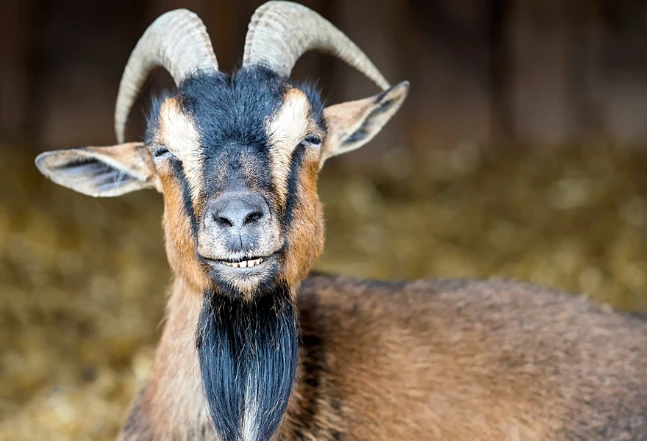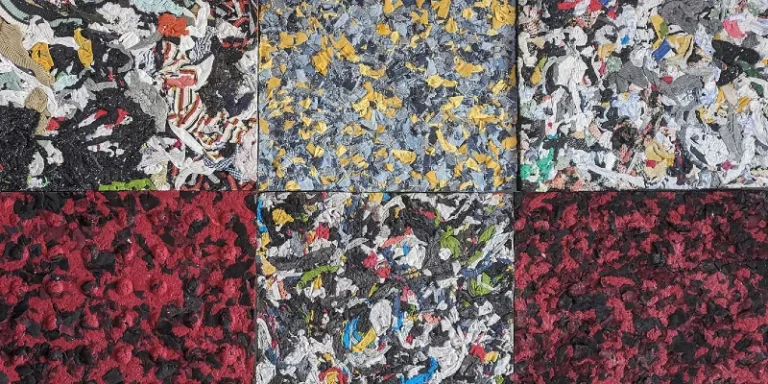Keeping Goats On Your Homestead to Provide Your Family with Meat, Milk and Leather and How To Care for Them
Goats are a great choice of livestock for any homesteader. They’re multipurpose animals and are easy to handle. Here are my top three reasons you should consider investing in (and enjoying) goats as livestock:
- Goat meat is delicious and is healthier for you than other red meats like beef, pork and lamb. It has less fat and saturated fat, contains just about as much protein, has fewer calories and more iron than the other red meats.
- Goat milk is delicious and nutritious and is easier to digest than cows milk, which makes it a great option for people that are lactose intolerant.
- Goat hides are used to make clothes and in leather crafts.
But we can’t forget the most fulfilling part of raising goats…
They’re gentle, silly and sometimes annoying little critters that will provide you and your family a lot of entertainment. You’ll experience their constant, entertaining antics together. So if you’re looking to start raising your own livestock for a healthy source of food, consider adding goats. Turn to this guide to see if goats are a good fit for your family.
The first thing that you need to do is to check for any laws, rules, regulations and ordinances in your area concerning raising and harvesting livestock on your homestead, the last thing you want to happen is to have everything ready and find out that it’s prohibited. Once you know that you’re able to raise some goats, you’ll want to get everything set up and ready before bringing any home. This will lessen the stress on the goats and on you as well.
Pastures: What You Need To Know
The good thing about goats is that they are browsers and not grazers, so it won’t matter if you don’t have a pasture full of lush green grass, goats love browsing on weeds, tree leaves, bushes and shrubs. Planting some plants for browsing is a good way to keep your goats busy and help a little with feed costs. You’ll want to do any planting well ahead of the time that you will be bringing any goats home, to give them time to grow big enough, but if you won’t have enough time, you can just plant the pasture that will be used to rotate your herd and once they move to the new pasture you can plant the old one with some new browse plants.
A list of good plants for browsing is provided below, as well as a list of some plants that could be toxic. Goats are pretty good about what plants they choose to eat, but it’s never a bad idea to remove any plants that could potentially harm your goats.
The first thing you’ll want to do is measure the area you’ll be using for your goats, once you have figured out the total amount of acres you have available, you’ll need to divide it by two, it’s best to have 2 equal sized pastures so that you can rotate your herd to a fresh pasture at least every month to allow the other pasture to regrow any browse and for you to preform any parasite prevention and maintenance.
Once you have the amount of acreage of both pastures figured out, you’ll know the amount of goats you can keep. One acre of pasture can house 6-8 goats, this number depends on the size of the goats you’ll be raising. You should always keep at least three goats, goats are herd animals and will be stressed and unhappy being kept alone. If you’re thinking about keeping your own buck for breeding (more about this in the breeding section), you’ll want to have a separate pasture area away from the does pastures, so you’ll need to deduct that amount of space from the other pastures.
Fencing and Protection from Predators
When it comes to fencing for your goats, it’s very important to install the strongest and most secure fencing that you can, goats are very curious, persistent and stubborn critters and will do whatever they can to get to whatever has caught their attention on the other side. You undoubtedly already know that goats are excellent climbers and love to get on top of any surface they can. Meaning, if there’s anything near the fence that they can jump on, they will use it to hop right over your fence line. So be sure that you remove anything (tree limbs or stumps, climbing toys, or shelters) that is close to the fence lie before putting your goats in.
You can choose between an electric fence system, a wire mesh fence, or a combination of the two. Look into all the options that are available for goat fencing, and choose the option that will work best for you and your budget, but this is definitely not a time to cut corners. It’s better to spend a little extra for your fencing than to lose your goats from injury, escape or predators.
The fence should be 4-5 feet high to help prevent the goats from jumping it. When using a wire mesh fencing, be sure to choose one that the spacing is 2-4 inches apart to prevent goats from sticking their heads, horns or feet through it and becoming stuck. The bottom of the fence should be on the ground to help prevent any goats from crawling under.
The fence should be stretched as tight as possible so that a goat can’t push it over. Always check your fence line as often as possible to check for any damage, so that it can be repaired quickly.
Electric fences work well with goats, they don’t like being zapped, but there is always a chance that you could get a goat that will ignore it. Most goat farmers will use 4- 5 (5 strands is best to help prevent jumping and for predator protection) strands of electrified wire. They recommend the wire to be charged from 5000 volts at the minimum and up to 10,000 volts for the most protection.
The bottom wire should be installed as close to the ground as possible to prevent goats and predators from crawling under it. Be sure that you check your fence line as often as you can to check for any tree branches or limbs or heavy weed or grass growth, this can cause your fence to not function properly.
Some farmers will use both types of fencing by installing an electrified wire along the top and borrow of the wire mesh fencing to provide an added protection to keep goats and predators from jumping or crawling under the fence.

To add another form of protection against predators, you can introduce a livestock guardian dog, the best breeds of dogs for this job are the Great Pyrenees, Akbash Dog and Anatolian Shepherd. These dogs will instinctively bond with your herd and will protect them against any predator that enters the pasture. Purchasing a puppy and raising them with the herd is the best way to get the pup bonded to the herd and for the herd to bond with the pup.
Check online for a good breeder that actually raises their breeding stock for livestock protection, and ask them for any tips on how to best train your pup. These breeds are also great for families, and they will become a devoted protector for his or her family.
Housing: Comfort For Them, Affordable For You
Goats don’t handle being cold or wet well, they’re prone to developing hypothermia and upper respiratory infections if exposed to these conditions.
For cold climates, it’s best to use an enclosed barn that’s well ventilated and has good cross ventilation, this is important to help reduce the build up of moisture and ammonia which can cause respiratory issues. The doors can be left open during the day and closed at night to provide protection from the elements and predators. The barn doesn’t need to be heated, but should have stalls so that you can separate pregnant and nursing does. Any other stalls can be left open for the other goats to use.
Each goat needs to have at least 10-20 square feet of indoor space, depending on their size, and does with kids should be given at least 20 square feet to provide enough room to raise her kids. For warmer climates, you can use a three sided pole barn or shed for a shelter, but you will still want a separate kidding barn for your pregnant and nursing does.
A kidding barn allows you to observe and monitor the does during the last part of their pregnancy, assist with the birth if needed, and also monitor the kids for any problems. You can choose to build your own shelter or purchase one from a gardening center. For bedding, you can use straw or wood shavings.
You will want to remove any wet and soiled bedding at least once a day and replace with fresh bedding, and all bedding should be removed and replaced at least every 2 weeks, more often if needed. It’s best for your goats’ health to keep the bedding as clean and dry as possible.
You can compost your soiled bedding, it makes great fertilizer for your gardens and lawns.
I would recommend going online and looking at the different choices of shelters, so you find the one that will work best for your climate, budget and your herds’ health.

robust metal slabs in the basic frame to ensure the durability.
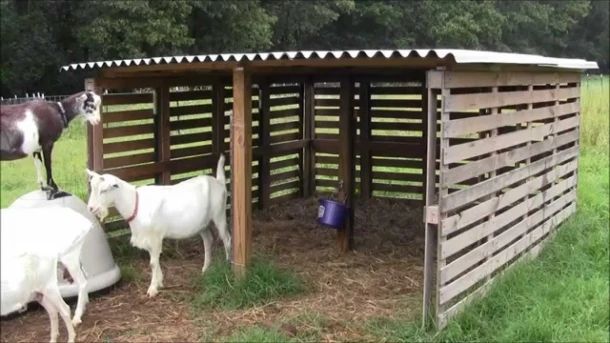
metal shuttering roof made from recycled materials.
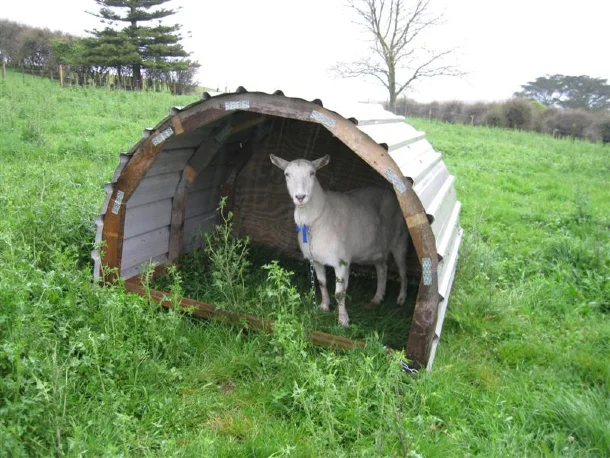
This sheltered was put together for $60.
Goats Need To Play
Goats are active, playful and curious critters by nature, and unless they have things to entertain them, they will most likely get into trouble.
Giving your goats a playground and some toys will help keep your goats busy ad out of trouble.
Goats love to climb on top of things, so raised platforms of different heights, connected by ramps, make great goat playgrounds. You can also use picknick tables, the plastic playhouses, slides and see-saws made for kids, as well as large tree stumps and logs, the huge wooden spools used for cable, semi truck or tractor tires (just bury them halfway in an upright position).
You can build your own platforms, and you can check online for any ads for people selling used kids playground equipment and picnic tables. Be sure that you don’t place any of the playground equipment near the fence line, to prevent it from being an escape route for your goats.
For toys and other things to entertain your herd, try giving them different sized Jolly balls made for dogs or horses, clean plastic jugs and containers, and branches from trees and shrubs that are safe for goats.
Your goats will also enjoy a post that is securely in the ground and securely attach several brushes (for horses and other livestock) for your goats to rub against. Just always make sure to choose toys that your goats can’t chew up and eat the pieces.
It’s also good to rotate the toys periodically with new toys or ones they haven’t played with for a while, this will keep them from becoming bored with them. Be sure to clean all the playground equipment frequently to remove any feces or urine, this is important to reduce the risk of bacterial growth, parasites and reduce odors.
The more entertainment your goats have, the less time they’ll have to cause trouble. Plus, it’s really a lot of fun to watch them play.
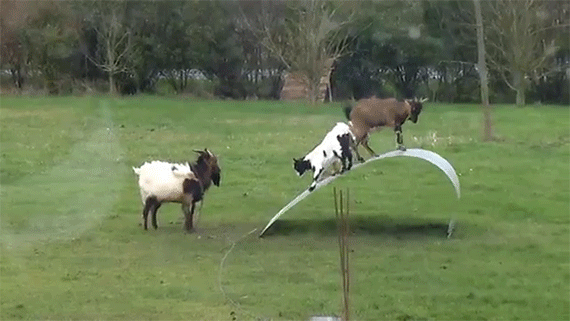
Goats Gotta Eat
Even though goats are efficient at browsing, they quickly will eat all the available browse, so you can’t count on it to be your herds only food source, they need to be fed hay, or chaffhaye, or a combination of the two. You can also supplement with a pelleted goat diet or grains, but these foods need to be fed in small measured amounts, in individual dishes, never free feed these foods, goats will over eat these foods which can cause obesity, which will cause other health and reproductive issues.
Alfalfa hay is a good choice for feeding goats, and can be free fed using a hay feeder. The hay needs to be fed off the ground to prevent it from being trampled and soiled. Hay needs to be kept dry to prevent mold from developing, which will cause illness in your goats.
Due to the rising costs of hay, many goat farmers will feed hay in combination with Chaffhaye. It’s important to store any open bags of feed in a storage container with a secure fitting lid to help prevent rodents and other pests from getting into it. Large plastic or metal trash cans work well for feed storage.
Chaffhaye is a great choice of feed for your goats, chaffhaye is made with alfalfa hay that’s harvested before it’s peak harvest time and dried to a 50% moisture level, it’s then misted lightly with molasses and put into a bag and vacuumed sealed to create an anaerobic environment, it then begins to ferment which helps break down the hay making it easier for your goats to digest and increases nutrient absorption.
The microflora in Chaffhaye will promote a healthy digestive system in your goats. Each goat will eat 1 ½ -2 ½ pounds of Chaffhaye per 100lbs of body weight. Goats can be picky on the type of hay they’ll eat, but they will readily eat Chaffhaye.
You can choose to use Chaffhaye as your goat’s main diet and free feed it, and just offer some alfalfa hay in a hay feeder as a browse if they want.
Many goat farmers have had great results in their goats health and body conditions using Chaffhaye as their goats only feed.
Your goats should always have access to a salt and a mineral block, you’ll want to place them in a holder or shallow container to keep them off of the ground, to help keep them dry and from becoming soiled.
When it comes to giving treat to your goats, you always want to offer them occasionally in very small amounts to help prevent digestive issues.
Fresh fruits and vegetables make good treats for goats, celery, carrots, summer squash, zucchini, pumpkin, melons, apples, berries and squashes are some good choices.
Your goats need access to fresh, clean water at all times. You can use water buckets or a trough. When using buckets, be sure to secure them to a post to prevent them from being tipped over. Water buckets should be checked at least twice a day and refilled as needed, and cleaned daily.
Water troughs should be checked at least once a day and refilled as needed, and emptied and cleaned at least once a week. Keeping your herds water containers clean is important to prevent the growth of algae and bacteria.
It's Breeding Time
There are some important things to consider in regard to whether you keep your own buck to breed your does, if you’ll have them serviced by a buck from a breeder or if you’ll choose to find a breeder that offers artificial insemination services. All the options have their benefits, but they also have some downfalls. The best thing to do is research each option thoroughly before you bring your first goats home.
You’ll want to choose the option that works best for your families schedule, budget and available space. You’ll also need to decided if you want to raise goats for meat only or milk only, a list of dairy goat and meat goat breeds are provided below to help you choose the breed that will work best for your needs.
Take a look at the options below to get a quick idea on each one to help you know which option might work best for you so you can then look into it more thoroughly.
Option 1: Buy Weaned Meat Goat Kids
This option will only work if you only want to raise goats for meat and not for milk. You can purchase weaned meat goat kids each spring to raise until harvest age, the cost of a meat goat kid can vary depending on its pedigree, look for breeders that offer kids that aren’t show quality, you only want kids to raise to harvest age.
This option will eliminate the need for a kidding barn and supplies, the cost of raising a breeding herd as well as a breeding buck, and the time it will take to clean the kidding barn, monitoring and assisting any does with kidding and also the time if you need to raise any weak, orphaned, injured or rejected kids during the kidding season.
Option 1: Breed Them Yourself
You can purchase weaned kids and raise them until breeding age (does-7-10 months and bucks- 8-10 months of age) or if you want to get your herd started sooner, you can purchase breeding age does and bucks.
Goats of breeding age will cost more, and some breeders will offer bred does for sale, but they will cost even more. When it comes to whether you should keep a buck for breeding your does (be sure he isn’t related to the does), keep in mind that they’ll need their own pasture and shelter away from the does. It will cost you to feed and care for him, and they can be difficult and sometimes aggressive when does are in heat.
Don’t forget, intact bucks stink, they will urinate on their legs and also spread urine all over their bodies.
A lot of goat farmers will find a breeder that has bucks they will offer for breeding or even offer artificial insemination services. Depending on the breeder, you might have to take your does to their farm for servicing or artificial insemination, and some will offer to bring a buck to your farm to service your does or preform artificial insemination.
You’ll want to have a kidding barn with individual stalls (at least 20 sq ft of space) for each doe, this will make it easier to monitor the doe for any problems that might arise during birth and also monitor the kids to ensure that the doe has accepted them, and they are nursing well.
Check online for designs on setting up a kidding barn to help you find the one that will work best for you.
A list of the supplies you should have on hand during the kidding season is provided with the list of first aid supplies below.
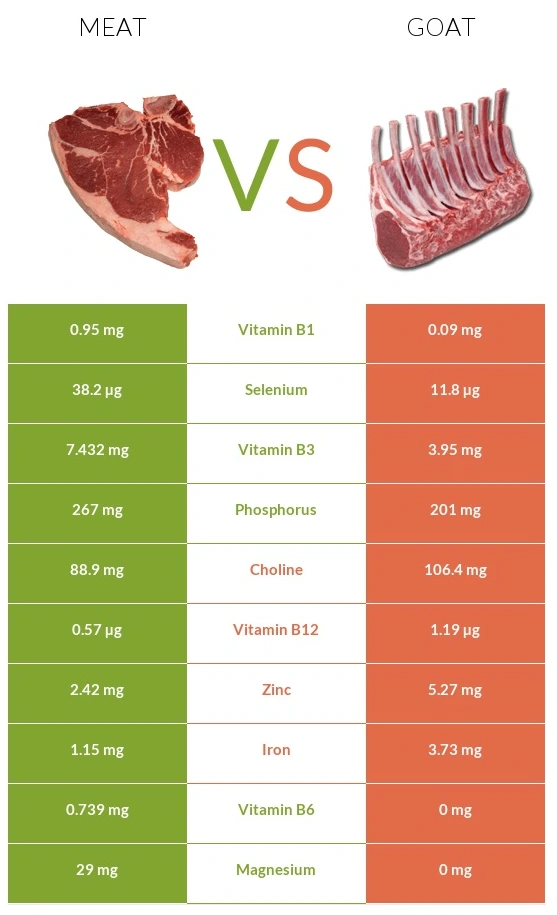
Before you consider buying your first goats, take time to research each option carefully and know the pros and cons of each one available to you.
Breeding livestock is a rewarding and fun way to feed your family, but if you choose an option that doesn’t fit your schedule, budget or available space, the whole experience could be devastating for all involved.
Once you find the option that works best for you, I would recommend that you purchase a good book on goats that includes, breeding and goat health.
Having a good book on hand will give you a source to go to when you are faced with any issues that could come up during kidding season.
You’ll also want to look at the options on how often you milk your does and what each option will work best for your families milk needs and the amount of time you have available for milking.
There are two options, once a day and twice a day milking, each one has its pros and cons, and also how much time will be required by you to do it.
Most small homesteaders do it once a day because it’s easier on the does and kids and you as well. The kids can still be raised with their moms during the day, and at night they are separated so that the doe’s udders will be full in the morning for you to gather the milk.
When using twice a day milking, the kids must be kept separate from the does permanently, which means that you’ll have to bottle-feed them.
This method is usually used by large scale goat farmers that want the maximum amount of milk to sell.
Just choose the option that will work best to provide you with the milk your family needs, and lessens the stress on the goats as well as yourself.
You’ll also need to know what you intend to do with the male kids (buckling) or any surplus female kids (doeling)? Most homesteaders will keep the doelings for future milkers and sell the bucklings as pets or harvest them, or sell them, for meat.
The amount of each sex born each season will vary, so be sure to have a plan if you happen to get a surplus of either sex, so you won’t become overwhelmed or overcrowded.
The breed of goat that you raise will depend on whether you are just interested in raising for milk or just for meat.
Both types can be harvested for meat and milk, but if you raise dairy goats, the amount of meat you will have to harvest would be less than if you were raising meat goats and vice versa.
Meat goat farmers will harvest both sexes and only hold select males and females for future breeding stock.
A list of dairy goat and meat goat breeds are provided below to help you choose the breed that will fit your needs and homestead best.
Keeping Your Goats Healthy
When raising livestock, one of the most important things you have to do is to keep them healthy, and a great way to start is by finding a veterinarian in your area that either specializes in livestock or one that has experience with treating them.
Developing a good relationship with a vet is a great way to find the best vaccination and worming schedule for your herd, as well as being a valuable source of information and help on how to treat any health issues that may arise. Keep their number on speed dial, and also keep a card in your first aid kit in case of emergency. A list of supplies you should have on hand in your first aid kit is provided below. You can find most of the supplies at your local pharmacy or farm supply store, or online through a livestock supply store. Some medications will only be available with a prescription from a veterinarian.
Here are the standard vaccines for goats. Keep in mind, your vet may recommend other vaccines and different wormers, some regions have higher risk factors for certain diseases and parasites than other regions.
- Standard Vaccines
- CDT-Clostrodial C and D and Tetanus (should be given to all goats aged six weeks and up)
- Pasturella
- Campylobacter
- Chlamydia (breeding stock)
- CL- Caseouslymphadentis
You’ll want to get a book on small ruminants that includes an in depth section on the diseases and other health issues found in goats and read the symptoms and the treatments that each one you might encounter, so you’ll be able to identify a problem early and begin treatment quickly, animals are very good at hiding illness and injuries to avoid the attention of predators, so when they start showing signs they are sick, they most likely are already pretty ill, so knowing the symptoms to watch for will help you get treatment started and increase the chances of the goat surviving.
Be sure to watch your goats’ behavior daily, so you’ll know what they act like normally, and you’ll notice right away when they just seem off. A list of the common diseases and health issues as well as the list of the signs of illness are provided below.
Doing regular health exams on your herd is also a good way to identify any possible health issues, if you can examine each goat daily for any discharge from the eyes, nose or mouth, and run your hands around all areas of the body to feel for any lumps, swelling, sores or wounds as well as feeling for any signs of thinness or obesity. If daily exams aren’t possible, try to do the at least every other day or two.
It’s a good idea, if you have the space available, to set up a small garden shed that you can use as an isolation and treatment shed. Build two stalls so that you can either house multiple goats or have an empty stall that’s set up to use to transfer the goat being treated into while the other one is being cleaned and have it ready to go for the next cleaning.
If possible, install electricity to the shed to make it easier to see when you have to do any evening treatments. Having a treatment shed will help you keep a closer eye on the patient and also help reduce the risk of the rest of the herd from becoming sick. Have a couple pairs of overalls or old clothes, as well as some old shoes that you can wear while you’re doing treatments, and then they can be washed after treatments are done. This will help reduce the risk of bringing any germs to the other goats. Always thoroughly clean the shed and all equipment used after treatments are finished.
Hopefully you’ll never need to use this shed other than for storage, but having it available when you need it will help reduce the stress on you and the animal.
You’ll want to trim your goat’s hooves every two-four weeks, trimming is important to keep the feet healthy and avoid injury. Overgrown hooves can cause lameness as well as joint and foot issues.
To trim your goat’s hooves, you’ll want to have a milking stand (even for meat goats)this will make it a faster and easier task. The head restraint on the stand will keep the goat still.
Ask your vet to show you how to do it, or check out the how-to videos online.
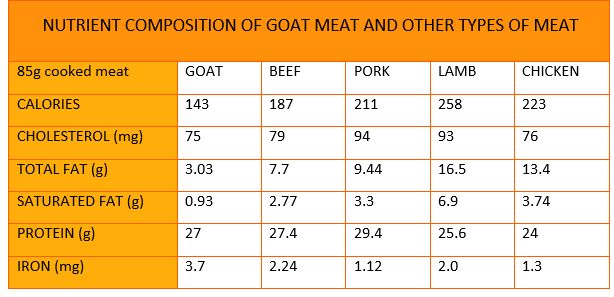
Harvesting Humanely
The first thing you’ll need to do, far in advance of harvest time, is to check for any rules, regulations, laws or ordinances in your area regarding harvesting livestock at home, to know for sure that it’s permitted.
Harvesting time is probably the hardest time for most homesteaders, but it’s a necessary one that needs to be done. The most important thing is that it’s done quickly and humanely with as little stress and fear for the animal, this animal is giving its life to feed your family, and it deserves a humane and respectful end.
If you’ve never harvested livestock or hunted, you’ll want to observe the process either from an experienced homesteader or a professional processor. This way, you’ll be able to decide whether this is something you can handle doing yourself.
If you’re not sure that processing your own goats is something you can do, talk to the person you’re observing to see what they would charge to process your goats.
The farmer might be willing to come to your place and assist you the first time you are going to harvest yourself, having someone there to help quickly if needed is always helpful.
Some professional processors offer mobile processing services, which eliminates the need to transport your goats to the processor, less stress on the goats and you. If you feel that you’ll be able to process your goats, be sure that you watch an experienced processor at least one or two times and ask any questions you have and also for any tips they might have.
There are also some homesteaders that have videos of harvesting on the homestead, check them out, you could learn some really helpful ideas and methods that will help make your experience easier for you and your goats. It’s important to always be sure that you make this process quick and humane, and cause the least amount of stress and fear on the animal.
After harvesting, you’ll have a supply of goat hides, you can choose to learn to tan your own to use for clothing and leather crafts, or if you have more hides than you can use yourself you can sell them to other leather crafters. You can also contact local tanneries that might be interested in purchasing your raw hides. Selling some or all of your hides would give you a little extra cash to offset the cost of raising the herd.
Goats are a great choice of livestock for any homesteader that wants to provide their family with healthy meat to eat and milk to drink. You might start with a small herd, but you’ll most likely want to add more of these entertaining, funny and sometimes troublemakers to your homestead.
List of Dairy and Meat Goat Breeds
The weights listed are for both the doe and the buck, with the lighter weight being the doe and the higher weight is the buck.
DAIRY GOATS
- Alpine Goat- 135-170 lbs
- Lamancha Goat- 130-160 lbs
- Nigerian Dwarf Goat- 75-85 lbs
- Nubian Goat- 135-170 lbs
- Oberhalsi Goat- 120-150 lbs
- Saanen Goat- 135-170 lbs
- Sable Goat- 135-170 lbs
- Toggenburg Goat- 120-150lbs
MEAT GOATS
More To Discover
- Boer Goat- 190-340 lbs
- Damascus Goat- 121-176 lbs
- Kalahari Red Goat- 165-252 lbs
- Kiko Goat- 100-300 lbs
- Pygmy Goat- 50-86 lbs
- Savanna Goat- 132 lbs
- Spanish Goat- 100-250 lbs
- Tennessee Fainting Goat- 60-174 lbs
Signs & Symptoms of Illness In Goats
- Weight loss
- Change in eating and drinking habits
- Staying away from the herd
- Lethargy
- Difficulty breathing
- Wheezing or coughing
- Pale gums or eyelids
- Diarrhea
- Bloated abdomen
- Discharge from eyes, nose or mouth
- Lameness
- Swelling in joints
- Red or swollen eyes
- Bleeding
- Bruising
- Hunched over/arched back
- Itchy and red skin
- Missing hair
- Loss of coat color
- Lumps or abnormal growths
- Blisters on mouth
- Hard, hot and painful udders
- Discharge from vulva/penis
Common Health Issues In Goats
- Bacterial Mastitis
- Bacterial pneumonia
- Bloat
- Brucellosis
- CAE (Caprine arthritis encephalitis)
- Campylobacter
- Chlamydia
- CL (Caseous lymphadentis)
- Coccidiosis
- E. Coli (Escherichia coli)
- Enterotoxemia (overeating disease)
- Foot rot/foot scald
- G-6-S (genetic defect found in Nubian and Nubian cross goats)
- Gastrointestinal Parasites (roundworm, tapeworm, etc.)
- Haemonochrosis
- Johne’s Disease
- Leptospirosis
- Listerisosis
- Mycoplasmosis
- Neosporosi
- Orf (sore mouth)
- Pasturella
- Pinkeye
- Polioencephalomalcia (thiamine/vitamin B deficiency)
- Pregnancy toxemia
- Q- Fever (coxiellabrunetii)
- Ringworm
- Salmonella
- Toxoplasmosis
- Urinary Calculi (stones)
Assemble Your Goat First Aid Kit
(some of the medications listed are only available by prescription)
- Plastic storage bins
- Book on small ruminant diseases, illnesses and injuries and their treatments)
- Digital rectal thermometers (at least 2)
- Disposable exam gloves
- Bandage scissors
- Medical scissors
- Tweezers
- Scalpel and blades
- Vetwrap (both sizes)
- Bandage tape
- Gauze Pads (2×2 and 4×4)
- Newborn diapers or maxi pads (for large bleeding wounds)
- Triple antibiotic ointment
- Betadine
- Vetricyn spray
- Vet Rx
- 7% Iodine solution
- Terramyacin ophthalmic ointment
- Needles (22,20 and 18 gauge)
- Syringes (3,6,10 and 20cc)
- Drench Gun and tubing
- Styptic powder (you can also use cornstarch)
- Children’s Benadryl (liquid)
- Stethoscope
- Milk of Magnesia
- Activated charcoal
- Baking soda
- Epsom salt
- Fly strike spray
- Kayro syrup
- Black strap molasses
- Honey (good for burns and wounds)
- KY Jelly
- Hoof trimmers
- Hoof and Heel (for foot rot)
- Aspirin
- Mastitis test strips
- Probios paste (for bovines)
- Vitamin C
- B complex fortified
- Electrolytes (Pedialyte)
- Saline solution
- Rubbing alcohol
- Hydrogen peroxide
- BoSe or Replamin Gel (Rx only)
- Iron supplement
- Nutridrench
- Thiamine (Rx only)
- Penicillin
- Oxytetracycline
- Tetracycline
- CD and Tetanus Antitoxins (not vaccines)
- Towels (all sizes)
- Blankets
- Paper towels
- Notebooks and pens
- Heating pad
- Overalls or old clothes and old shoes (for treatments)
- Garbage bags (for clean up)
- Flashlights (pen light, head lamp and large flashlight)
- Vet contact information
- List of dosages for each medication and supplement
Kidding Kit Essentials
(some of the items will also be in your first aid kit)
- Plastic storage container
- Small plastic container (to hold the iodine solution for dipping umbilical cords)
- 7% Iodine solution
- KY Jelly
- Needles (22 and 20 gauge)
- Syringes (3,6,10 and 20cc)
- Stethoscope
- Digital rectal thermometer
- Infant nasal suction bulb (to clear nose and mouth)
- Unwaxed dental floss
- Betadine
- Colostrum (frozen)
- Bandage scissors
- Medical scissors
- 2-Surgical clamps (medium size for clamping the umbilical cord to be tied and cut)
- Rubbing alcohol (to clean any medical instruments before and after use)
- Shallow container to hold alcohol for cleaning instruments
- Disposable exam gloves
- Baby wipes
- Puppy House training pads
- Towels (all sizes)
- Blankets (smaller size)
- Paper towels
- Heating Pad
- Bottles and nipples
- Clean glass jar with lid (to get milk from mother if possible)
- Wormer
- Electrolytes (Pedialyte)
- Bucket or tub (to hold warm, soapy water)
- Vet contact information
- Book on breeding goats with section on kidding)
- Garbage bags (for clean up)
- Flashlights (head lamp, pen light and larger flashlight)







